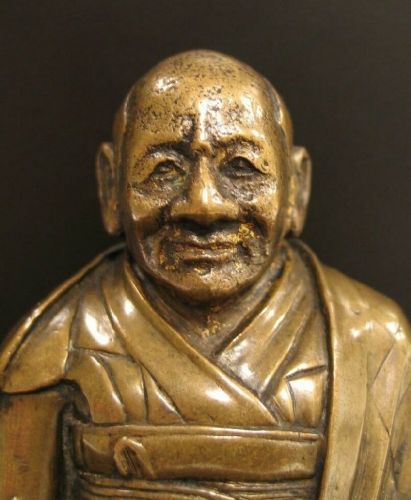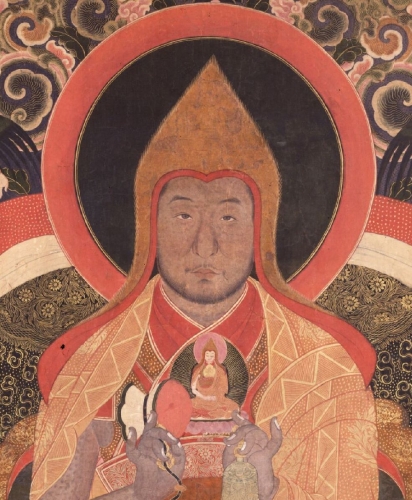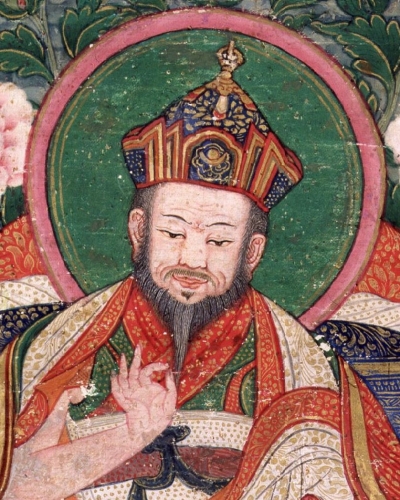Buddhist practice and Buddhist art have been inseparable in the Himalayas ever since Buddhism arrived to the region in the eighth century. But for the casual observer it can be difficult to make sense of the complex iconography. Not to worry—Himalayan art scholar Jeff Watt is here to help. In this “Himalayan Buddhist Art 101” series, Jeff is making sense of this rich artistic tradition by presenting weekly images from the Himalayan Art Resources archives and explaining their roles in the Buddhist tradition. This week Jeff describes the history of portraiture in Himalayan art.
Himalayan Buddhist Art 101: Portraits

Figurative forms are a mainstay of Himalayan art. The original subject of Buddhist art was the bodhisattva Shakyamuni Buddha prior to his enlightenment, along with supporting characters from the narratives of his life and previous lives. It was only natural that over the centuries other supernatural figures like the various buddhas, arhats, and bodhisattvas described in the sutras would also come to be depicted in sculpture and painting.
With the emergence of the idea of iconic Tibetan founding teachers and the growing importance of “authentic” lineages extending back in time and up to the present, the role of the contemporary teacher and lineage-holder became increasingly important. This was reflected in painting, where Tibetan teachers have been honored for a millenium. But not all of these depictions of teachers are true portraits—in fact, most are not.

The standard portrait paintings create a likeness based on either past artistic renderings or a physical description of a teacher given in the oral tradition. More often than not, the representations are generic, with only minor differences between likenesses depending on the status of the subject and their role in society, such as a king, monk, layperson, or siddha.
In some rare but not completely unknown cases we find true portraiture. These paintings or sculptures offer true likenesses of various teachers and leaders. These paintings stand out immediately: the central figure has real character, facial lines, distinctive shape—sometimes the subject’s mood or a sense of humor is even detectable.

Three examples of true portraiture are shown here. The first is a statue of Go Lotsawa Zhonnu Pal (1392–1481), the famous author of The Blue Annals. He is depicted as an elderly man with wrinkles, drooping eyebrows, and a large nose. The second example is of Demo Rinpoche (1631–1668). This extraordinary painting betrays a European aesthetic for portraiture that was coming into fashion at the Imperial Court in Beijing. Demo Rinpoche travelled with the Great Fifth Dalai Lama in 1651 to have an audience with the Chinese emperor. The painting was likely commissioned in Beijing at that time. The third example is that of Terdag Lingpa Gyurme Dorje, just prior to his death in 1714. He is also depicted as being old, with grey hair and a long beard, furrowed brow and wrinkles. All three examples depict men who are either middle-aged or elderly, and give a great deal of attention to this fact. These portraits are indicative of the general trend of true portraits in Himalayan art, as most tend to be of revered figures in their old age.
Learn more about portraiture at Himalayan Art Resources.
Thank you for subscribing to Tricycle! As a nonprofit, we depend on readers like you to keep Buddhist teachings and practices widely available.